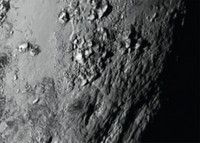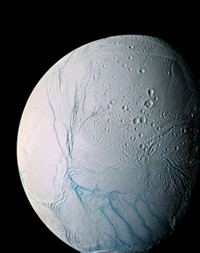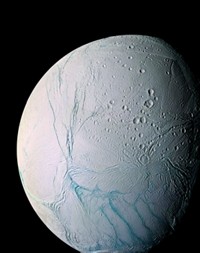Advertisement
Grab your lab coat. Let's get started
Welcome!
Welcome!
Create an account below to get 6 C&EN articles per month, receive newsletters and more - all free.
It seems this is your first time logging in online. Please enter the following information to continue.
As an ACS member you automatically get access to this site. All we need is few more details to create your reading experience.
Not you? Sign in with a different account.
Not you? Sign in with a different account.
ERROR 1
ERROR 1
ERROR 2
ERROR 2
ERROR 2
ERROR 2
ERROR 2
Password and Confirm password must match.
If you have an ACS member number, please enter it here so we can link this account to your membership. (optional)
ERROR 2
ACS values your privacy. By submitting your information, you are gaining access to C&EN and subscribing to our weekly newsletter. We use the information you provide to make your reading experience better, and we will never sell your data to third party members.
Physical Chemistry
Surprises On Mercury
Spacecraft finds evidence of volcanism and water
by Elizabeth K. Wilson
July 28, 2008
| A version of this story appeared in
Volume 86, Issue 30

WHEN THE MESSENGER spacecraft flew by the blistering, barren planet Mercury in January, mission scientists could barely contain their excitement about what they found—and didn't find.
Around the rim of the giant impact crater known as the Caloris Basin is never-before-seen evidence of volcanic activity—vents that have spewed lava into the crater. The particles that bounce around Mercury's tenuous "atmosphere" include silicon, calcium, and even water. And a long-theorized aspect of the surface has finally been confirmed: In stark contrast to the surfaces of Mercury's planetary neighbors Earth and Venus, that of Mercury is curiously devoid of iron.
The details were finally made public this month in a series of 11 papers in Science (2008, 321, 58–94). The boost in understanding of Mercury gleaned from this one flyby is gratifying, scientists say, given that the National Aeronautics & Space Administration's Messenger (which stands for MErcury Surface, Space ENvironment, GEochemistry & Ranging) is barely beginning its scientific mission. Launched in 2004, Messenger is on a lengthy, complicated trajectory, which includes two more flybys before the craft begins its primary objective of orbiting and mapping the planet in 2011.
"Mercury is an extraordinarily dynamic system driven by solar input, and we've just gotten one snapshot," said William McClintock, a Messenger mission team member at the Laboratory for Atmospheric & Space Physics at the University of Colorado, Boulder.
Because Mercury is so close to the sun, its surface can reach temperatures of more than 400 ºC. Although it has only 5% the mass of Earth, Mercury is the densest of the planets. It is believed to have a giant core of iron, mixed with some unknown substance, perhaps oxygen or sulfur, that keeps it liquid or mushy. Scientists have expected Mercury to resemble Earth's moon in composition and structure, but Messenger has upset that picture.
Images of Mercury's surface from Mariner 10, which flew by the planet in 1974 and 1975, showed smooth planes, but the resolution wasn't high enough to determine whether the features were caused by splattering and subsequent smoothing after meteoric impacts or from erupting volcanoes. Now, high-resolution Messenger images show characteristic geologic signs of both lava flows and explosive eruptions.
"This is the smoking gun for volcanic vents feeding the smooth planes of Mercury," James W. Head III, a Messenger team member and geology professor at Brown University, said at a conference earlier this month.
"Without a doubt, these are lava flows that have frozen, and there are many different ages of lava flows. That is a major discovery," agreed Ann L. Sprague, mission scientist at the University of Arizona's Lunar & Planetary Laboratory, in Tucson, and author of the book "Exploring Mercury: The Iron Planet."
DURING THE FLYBY, Messenger's spectrometers got their "first whiff of Mercury," scooping up charged and neutral particles in its atmosphere, said Thomas H. Zurbuchen, a team member and professor in the atmospheric, oceanic, and space sciences department at the University of Michigan. Mercury's atmosphere is so sparse that it's referred to as an exosphere, which means its particles are more likely to bounce onto the surface than bounce into each other.
The instruments detected ions of silicon, potassium, sodium, and calcium. But most surprising, Zurbuchen said, was the detection of water group ions. Three possible sources of water include shaded crater regions that could contain water ice, solar wind reacting with the surface to form water ions, or small water-bearing meteorites or comets, he said.
The apparent absence of iron, which would be in the form of iron oxide, on Mercury's surface has been puzzling because other rocky planets, such as Earth, are full of it. It's been thought that perhaps the bombarding solar wind has "weathered" the surface, muting iron spectral absorption lines. But now that Messenger's high-resolution spectrometers have also failed to detect iron at the surface, scientists are devoted to puzzling out the reason.
A major hypothesis holds that a huge object struck Mercury and that much of its crust, including FeO, volatilized in the process. Particularly volatile species, such as FeO, would have escaped, while the remaining material could have sunk back down to form a new surface depleted in FeO.
Denton S. Ebel, curator in the department of earth and planetary sciences at the American Museum of Natural History in New York City, believes the process may have begun even earlier, when the planet was still coalescing from a disk of dust swirling around the early sun. The dust in proximity to the sun where Mercury formed may have been enriched in carbon, likely in the form of graphite. Such an environment is very reducing, and any iron present would have been converted to its metallic form, rather than being incorporated as iron oxide into silicates, he said.
Mission scientists say much more is in store once the spacecraft is in orbit. "We're going to finally understand this very peculiar planet," Sprague said.





Join the conversation
Contact the reporter
Submit a Letter to the Editor for publication
Engage with us on Twitter